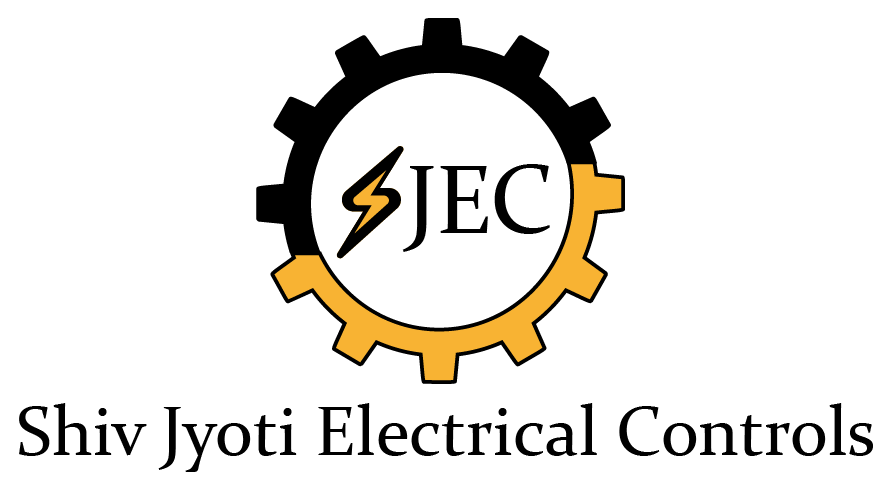
- +91-9818234252
- shivjyotielectricalcontrols@gmail.com
Transformers

A variable transformer provide a simple, rugged method of controlling electrical voltage, current and power. It takes in utility line voltage and provide continuously adjustable output voltage. When the value of the voltage on the AC line is incorrect, just a tum of the variable transformer dial operates a sliding brush that makes it right. The same dial can act like a rheostat to control the speed of motors; cutting input voltage reduces the motor speed. A turn of the dial converts power line output into the desired voltage. Versatility of the variable transformer lies in its ability to tap in anywhere from 0 to 100% of the line voltage, plus another 17% usually available because of a few extra windings in the secondary. Depending on the frame size, the output current ranges from 1 to 50 A at 120 V or half this amperage at 240V. Added versatility is possible by larger size units. Some single coil variable transformers are available with output rates low as 0.13 kV A and “ganged” 3-phase variable transformer units can reach 405 kVA. Most common use, especially with the smaller 500 to 750VA sizes, is to obtain AC voltages different from the normal 120 or 240 V, single or three-phase supply. The other major use is delivering either standard or test voltages from lines where voltages fluctuate above or below the normal standard.
APPLICATIONS
METREL variable transformers are applied to various products or applications including the following:
- Power supplies;
- Laboratory and test equipment;
- Speed control devices;
- Computer peripheral equipment;
- Welding controls;
- Variable speed devices for large machinery;
- Electroplating and anodising;
- High-voltage electronic tube circuits;
- Spare supply regulators in broadcast transmitters;
- Voltage stabilizers;
- High voltage test set;
- Meter test bench;
- Hydro generation plants;
- Battery chargers;
- DC motor controls;
- Plastic blow moulding machines;
- Control of furnace transformers;
- Lightening regulation;
- Laboratory stirrers;
- AC, DC brush motors;
- High current motorized voltage regulators;
- High current plastic plating operations.
TECHNICAL PERFORMANCES
High reliability
METREL variable transformers are practically maintenance free. Long-life operation is assured with:
- Precision winding;Surface forming of winding;
- Tight tolerances in preparing sliding track;
- Deep varnishing and baking also for fixing winding structure;
- A spring-loaded solid carbon brush.
Power factor
Power factor of load has very little effect on the operation of a METREL variable transformer in the range from 0.5 lagging to 0.5 leading. Like any transformer, the METREL variable transformer reflects the load power factor to the line with very little change. Only for very light loads, possibly under 10%, will the lagging power factor of the METREL variable transformer become significant due to magnetizing current.
High efficiency
METREL variable transformers have low electrical losses under all load conditions. Efficiency is 98.5 percent at maximum output voltage selected. This efficiency remains high, even at greatly reduced load voltage.
Ambient temperature
METREL variable transformers are designed for continuous operation in ambient of 0 °C to 40 °C, at full rated load. When operated above 40 °C, the output power must be rated in accordance with diagram 1. For example, when operating model HSH 230/4 in a 60 °C ambient, rated output current would be: 70 % x 4 A = 2.8 A.
Frequency
All METREL variable transformers are designed for operation at 50/400 Hz. They may be operated at higher frequencies, without derating, however regulation becomes poorer. Units listed for 230 V operations may be applied on 115 V at 25 Hz, however rated currents remain the same.
Linear output voltage
METREL variable transformers have the advantage of providing output voltage that varies linearly in proportion to the angle of rotation of the output voltage selector. Because of the large number of increments of output voltage selection with the slider, the output voltage is practically steeples.

- B-71/1, Block B, Mayapuri Industrial Area Phase I, New Delhi-110064
- +91-9818234252, +91-9810769461
- shivjyotielectricalcontrols@gmail.com
Website Designed & Developed By: Yatin Rawat


